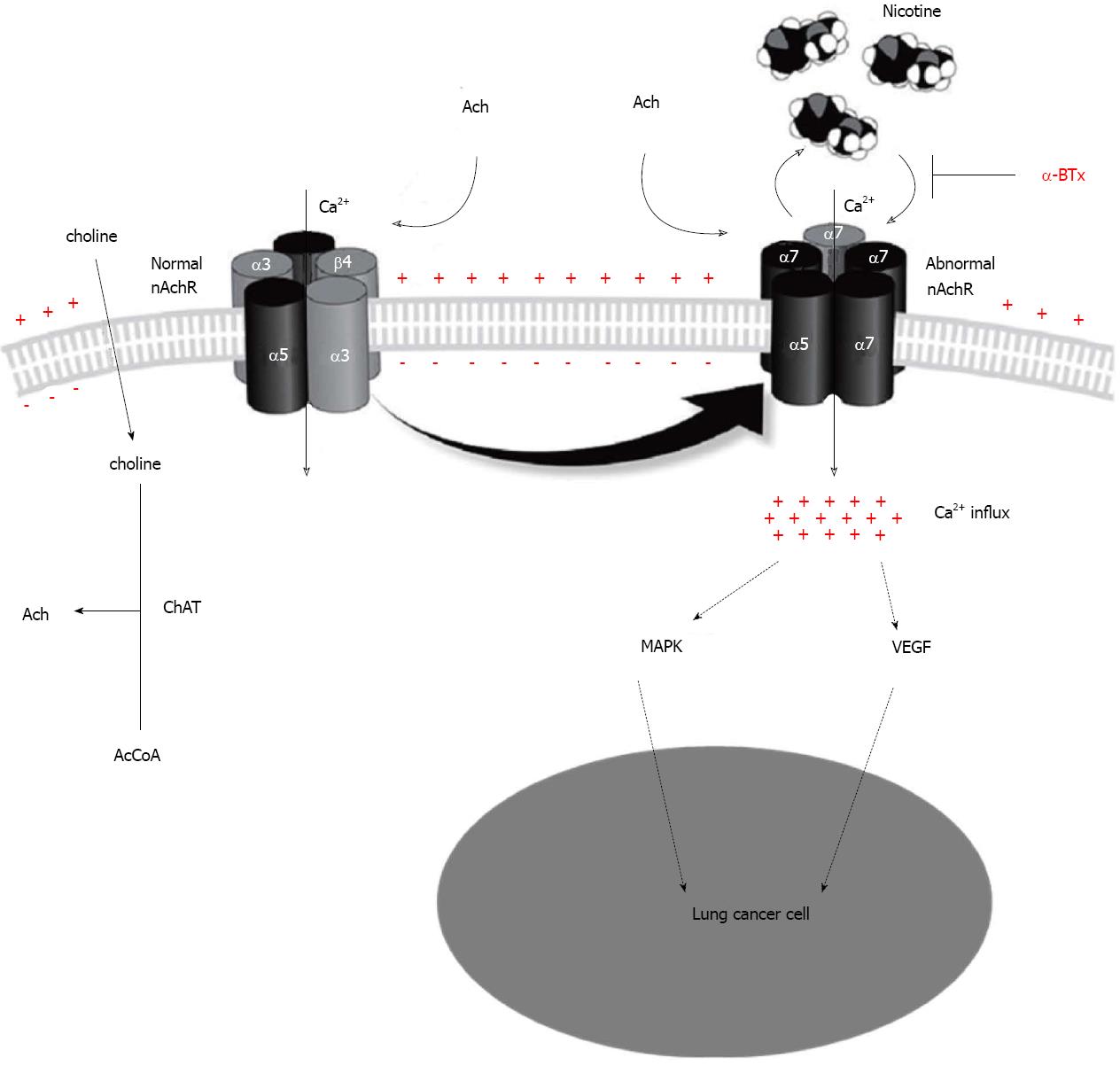Copyright
©2014 Baishideng Publishing Group Inc.
World J Clin Oncol. Oct 10, 2014; 5(4): 667-676
Published online Oct 10, 2014. doi: 10.5306/wjco.v5.i4.667
Published online Oct 10, 2014. doi: 10.5306/wjco.v5.i4.667
Figure 2 nAChRs pathway in lung cancer.
(1) ACh is synthesized intracellularly by the enzyme choline acetyltransferase (ChAT) from choline and acetyl-coenzyme A (AcCoA) before being released into the extracellular space. This signaling system is targeted by various biological modulators which can inhibit ACh release or ChAT activity. ChAT is strongly up-regulated in squamous cell carcinoma (SqCC), which increases levels of Ach, providing endogenous proliferative stimuli to nAchRs; (2) All nAChRs allow the influx of different cations (Na+, K+, Ca2+), and the α7nAChR is selective for Ca2+. Binding of nicotine to α7nAChR can cause Ca2+ influx into lung cancer cells and the subsequent membrane depolarization activates voltage-gated Ca2+ channels, which activates the MAPK pathway to promote cancer cell proliferation; (3) Hypermethylation of 15q25.1 locus and epigenetic silencing of the CHRNA3 gene may result in under-representation of α3 containing nAChR-subtypes, which in turn leads to over-representation of α7 and α5 containing nAChRs on the cell surface, further increasing Ca2+ influx mediated activation of the MAPK signaling cascade. As a result, cells with the complete or partial absence of the CHRNA3 subunit containing nAChRs may display defective cell death response; (4) α7nAChR antagonist abungarotoxin (α-BTx) can attenuate the proliferative effects of nicotine in NSCLC and SCLC cells; and (5) The other findings suggest a strong connection between growth factor mediated VEGF pathway and the cholinergic angiogenic pathway. The endothelial cell (EC) migration induced by basic fibroblast growth factor (bFGF) and VEGF can be inhibited by blocking the nAChRs with α-BTx.
- Citation: Niu XM, Lu S. Acetylcholine receptor pathway in lung cancer: New twists to an old story. World J Clin Oncol 2014; 5(4): 667-676
- URL: https://www.wjgnet.com/2218-4333/full/v5/i4/667.htm
- DOI: https://dx.doi.org/10.5306/wjco.v5.i4.667









